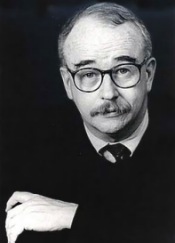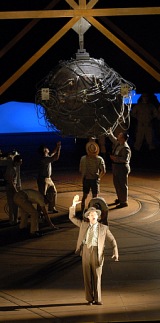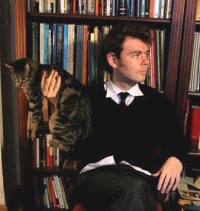 Rodney Lister. Composer. And Boston new music scene insider.
Rodney Lister. Composer. And Boston new music scene insider.
Did you learn anything in music school?
It’s been so long ago that I don’t remember.
Or does the phrase “circle of fifths” mean nothing to you?
If it did would that mean I’d have learned anything?
(Of course I did–I learned a fair amount about writing and thinking about music–from people like Mac Peyton (who I studied with for four years) and Donald Martino (who I raked leaves for–what are students for?) (and why can’t I find any like that) (who were both on the faculty at New England Conservatory, where I was a student) and Ezra Sims (who was just around) and all ready to be a guru. I learned maybe even more in the two years after I was at NEC, when I was living in London and studying–sort of–with Max (otherwise known as Peter Maxwell) Davies.
What’s your favorite “bad” piece of music? And briefly justify your crappy taste.
Define bad.
I love the Vaughan Williams Sea Symphony. It’s not bad, really, but I’m not sure I’d exactly say that it’s exactly good either. Is Percy Grainger bad? What about Virgil Thomson (Symphony on a Hymn Tune)? In some circles Babbitt is supposed to be bad, but my experience is that people who think that are mostly dealing in received wisdom and don’t know anything about any of his music–or at least don’t know any of his music directly.
Dave Soldier’s Most Unwanted Music is meant to be bad, and I think that’s pretty terrific (It’s supposed to be guaranteed that no more than 200 people on the globe will like it–I think I’ve met all of them.)
Not that you ask for it, but I can give you the pieces I hope never to hear again as long as I live: Also Sprach Zarathrustra (except for the beginning, particularly the first note), the complete Daphnis and Chloe, the Dumki Trio, and the Tschaikovsky Trio.
Your five-composition-long playlist for Schoenberg would contain:
What the hell is that supposed to mean? Is the implication that you want a list of five Steve Reich pieces to prove how cool it is and how cool Schoenberg could be if he’d realized he was wrong?
Congress calls on you to draw up a bailout plan for contemporary music! What do you do?
Well, I think the best way to get people to liking it is to get them to know it–actually listen to it and engage with it. For high school students–and younger–, who I deal with a lot of my time, I’m sure that it has to do with getting them to play it. (Generally they like it–whether it’s Cage, Schoenberg, Nico Muhly, Ruth Crawford, Sebastian Currier, Lee Hyla, Martin Bresnick, William Bolcom, or Piers Hellawell. In my experience Morton Feldman is a hard sale, though.) At any rate, any time it’s personalized, it seems to be enjoyed.
 First up:
First up:  Volker Bertelmann, otherwise known as “
Volker Bertelmann, otherwise known as “ Concerning the quality of John Adams’s Doctor Atomic,
Concerning the quality of John Adams’s Doctor Atomic,  Whoa!
Whoa! Dude!
Dude! In 2002,
In 2002,  Gabriel Kahane
Gabriel Kahane